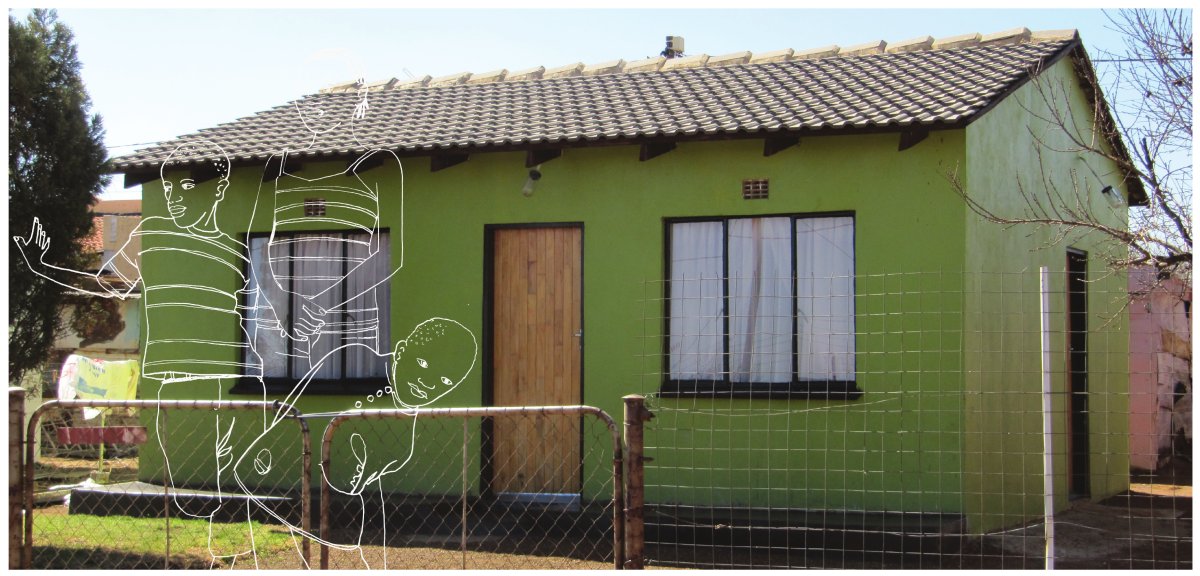You are here
Home Improvements (contd.)
Case study | The joy of investing into a subsidy house
Jeanette and her husband Lumic relocated from Graff Reinet to George in 1992 searching for better job prospects. In 1979 Lumic put his name on a housing list for a site. In 1993 they moved onto their site, which had a toilet and built a 4-roomed bungalow made of wood planks to live in. There was no electricity supply or running water. Finally in 1995 they moved their bungalow to a different part of the property and for three weeks watched as their subsidy house was finally constructed. They received the Title Deed to their property a few months after the house was completed.
In 2010, Jeanette and Lumic decided to remodel and improve their house. They took two personal loans from Standard Bank and First National Bank for R30 000, and then used another R25 000 of their own savings to finance the construction. Lumic is a full time employee of the Coca-Cola Company; he needed his pay-slip, ID document and bank statements to acquire the loan. Jeanette is a member of a stokvel. Although the building materials were bought incrementally, the remodeling of the house was completed in three weeks during February 2010.
The current house will be inherited by their youngest son thus they will never consider selling the house. The son currently occupies the original wooden bungalow they lived in before their subsidy house was built. As a family, they enjoy the freedom and independence that comes with being homeowners.
- click images to see larger version -
Case study | The story of a 35m2 starter house
The respondent we interview describes herself as a woman who has more faith in the dreams she has in the daytime. “You can’t trust the dreams you have at night when you are sleeping”.
There is no telling what her dreams were when she went to write her name on the housing waiting list or when, at the community meetings, the older men teased her suggesting she was too young to own a house thus would not qualify. However, regardless of her youthful looks, she was a single mother earning less than R 3500 per month and qualified to be among the first (along with the elderly) to be allocated a new home. Now her property boasts the original subsidised house, a container from which she runs a spaza shop, and two formally built backyard rooms, all with formal ablutions.
Patience moved to Slovoville in 1997. However, for nine years she continued to work in Silvertown faithfully making the commute each day. She also sold sweets during this time using the additional income to supplement the extra transportation costs that accompanied the move to her new RDP home. An inspiring story unfolds to reveal sheer determination, strength of character and hard work.
The rooms and spaza shop are both projects that were completed incrementally and yet they both grew simultaneously alongside the other. The rooms, needing much more capital than the spaza, and were built with a combination of stokvel savings, micro loans, building materials from Builder’s Warehouse and leaps of faith. The rental she received allowed her to take on an additional micro loan to build up her business and buy stock for the spaza shop. And the green container, on the other hand, is what she used to turn it into a spaza shop and sell small grocery items to her neighbours. She sees herself as having no other option in pursuing this avenue because she fears she will not find a job elsewhere. She hopes her efforts will leave an indelible impression on her daughters.
Today she is well respected among her peers, family and neighbours and especially her customers- the children who come and buy from her spaza shop. Her entrepreneurial spirit is inspiring. It has led her to take on financial risk with the micro loans she has acquired to establish a spaza shop and built the backyard rooms, which now house two tenants.
“An RDP house gives you the opportunity to use your mind and brains to make decisions for you and your family.”
“It is a shelter that gives you space to think and freedom to plan the future.”
“It is a start. It is one small thing, but this thing I like very much.”
Back to Panel 1
.
FINMARK TRUST
Powered by AA Media and The Architects Collective of South Africa
